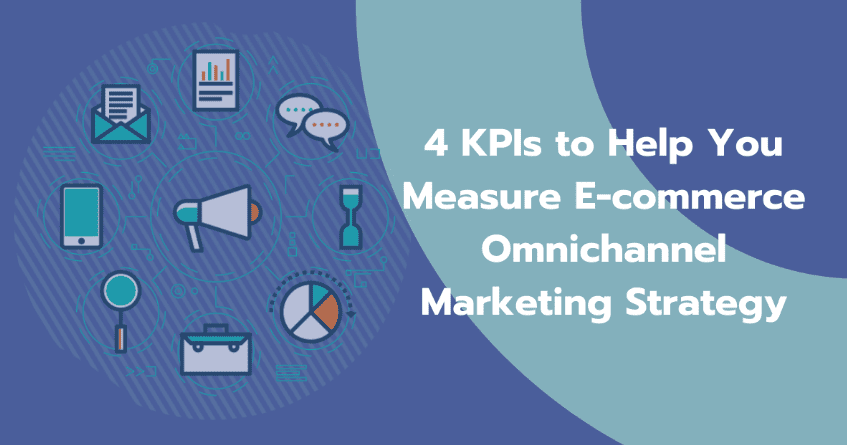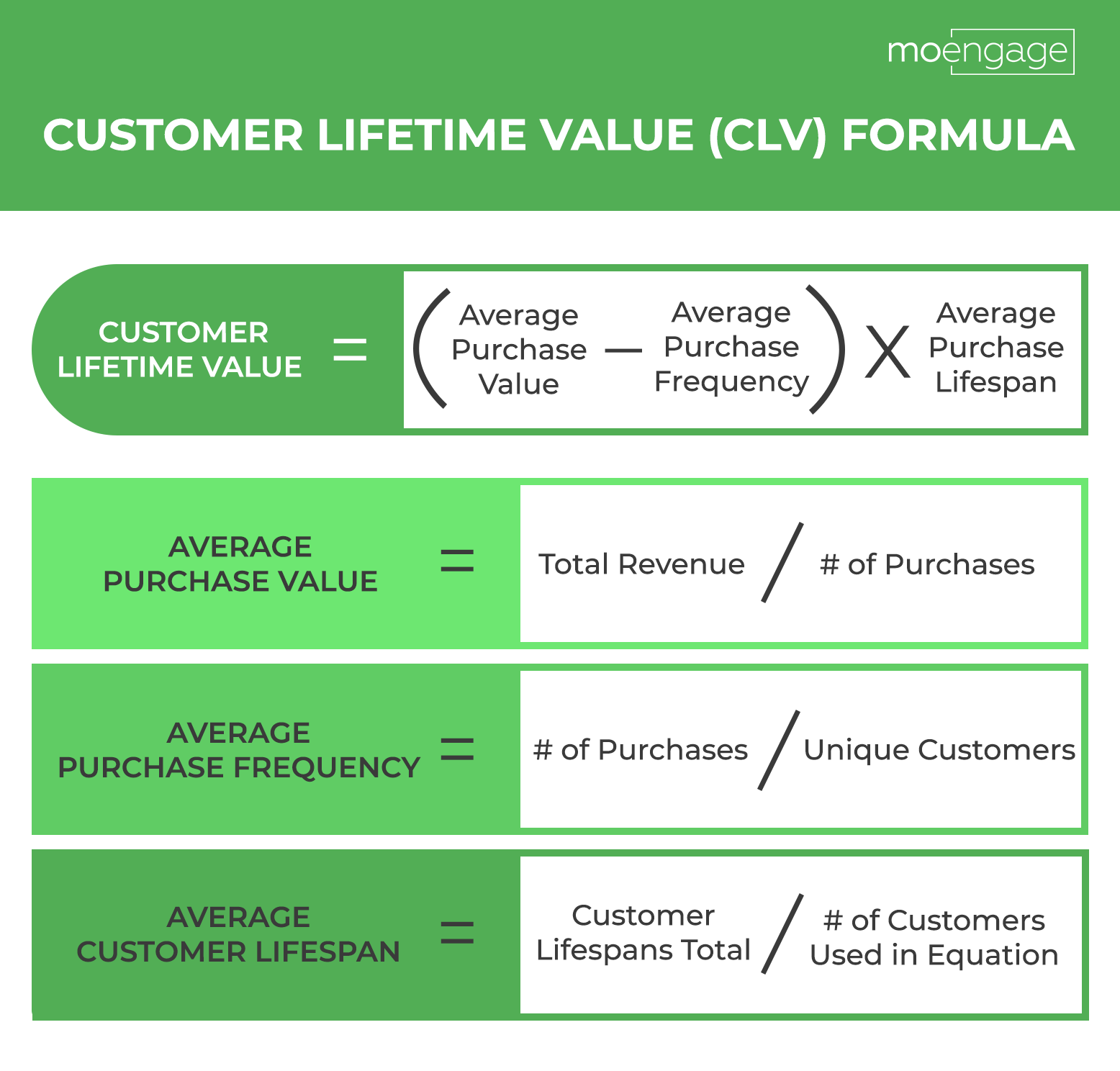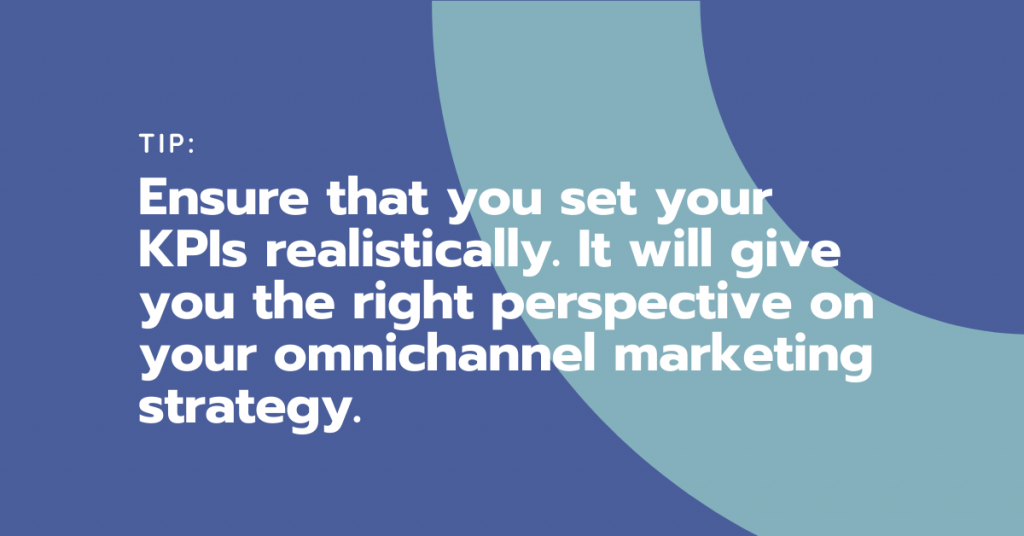4 Critical KPIs to Measure Your Omnichannel Marketing Performance

Reading Time: 5 minutes
Do you know your omnichannel marketing strategy can fail if you do not define your Key Performance Indicators (KPI)?
Omnichannel KPIs are crucial to driving your E-commerce business in the right direction.
In this article, you will learn:
- Why should you use omnichannel marketing for your E-commerce business?
- How to measure the performance of your strategy based on the four omnichannel KPIs?
Let’s get started!
| Bonus Read: |
Why Does Your E-commerce Business Need an Omnichannel Marketing Strategy?
Customers shop online because it is convenient. Online shopping gives them the flexibility to purchase anything, any time of the day. There is no pressure to buy immediately. They can purchase products after comparing the prices on different websites.
Omnichannel marketing can add more value to your customer’s online experience. As it lets you create a friction-free experience for your customers by plugging the gaps between different touchpoints (websites, mobile apps, social media platforms, etc.) and different devices (laptops, smartphones, and tablets.)
When you implement an omnichannel E-commerce strategy, measuring the key performance indicators become important. You can track the overall performance of your strategy using KPIs and fine-tune it to align with the customer’s experience. This also helps to understand customer satisfaction levels based on your business model.
Four Omnichannel KPIs to Measure the Performance of Your Omnichannel Strategies
When we talk about customer lifetime value, the customer typically goes through four stages—awareness, conversion, retention, and advocacy—with any brand. So, when you define or measure the KPIs, cover all the stages to get a 360-degree view of the performance of your omnichannel marketing strategy.
Some of the KPIs that you can measure are:
#1 – Brand Awareness
Unless you are an Amazon or an Alibaba, you have to elbow your way to grab your customer’s attention. Use search engine optimization, social media, videos, blogs, and Google and Bing ads to attract traffic to your website. Depending upon the channels you use, here are a few metrics that you can measure in the brand awareness stage:
-
-
- Cost Per Impression (CPM): CPM is the rate that you pay when a particular ad is shown to 1,000 viewers. Each appearance of the ad in front of the user is counted as one impression. Thus, track the CPM of your Google ads, Facebook and Instagram ads, and YouTube ads to know how many times your audience saw your ads. This is to help you determine the visibility of your brand.
- Social media engagement metrics: You might consider likes, shares, mentions, and comments as vanity metrics. However, these metrics are equally important, as they indicates the level of engagement your customers have with your brand and also help figure out the cross-channel conversion rate.
- Website traffic: Website traffic tells you if your brand awareness campaigns have worked well or otherwise. Check how many people visit your website, the bounce rate, and the duration of user activity on your website to get a sense of your campaign’s success. The website traffic metric will also help you to gauge newer methods that would help to attract customers.
-
#2 – Conversions
Your omnichannel strategy will be effective only when your prospects convert into buyers. Here are some metrics that you can measure at this stage of the customer journey.
-
-
- Conversion rate: You can derive the conversion rate by dividing the number of unique visitors converted into customers by the total number of unique visitors. If the total number of unique visitors is high, but the conversions are low. Then find alternative ways to improve your conversion rate.
- Cost Per Acquisition (CPA): CPA measures the cost incurred to acquire a customer through a marketing campaign. To calculate the CPA, divide the total cost of the campaign by the total number of conversions.
- Average Order Value: AOV gives you the average amount spent by each customer per transaction. AOV tells you how well your omnichannel marketing and pricing strategies have worked. Calculate the AOV for each customer by dividing the total revenue earned by the total number of orders.
-
Tip: According to OmniSend, the AOV of omnichannel marketing is $66.31 per order, while the AOV of single-channel marketing is $58.70.
#3 – Customer Retention Rate
Customer retention is important. The probability of selling to existing customers is 40% higher than selling to new customers. Plus, it is also five times less expensive than acquiring a completely new customer.
| Bonus Content |
Measure the following key performance indicator in the retention stage.
-
-
- Customer Lifetime Value (CLV): CLV is the total net profit you can earn from every customer. The longer they engage, the higher the CLV and the higher the CLV, the greater are your chances of earning profits. CLV will help you identify the most valuable customer segments for your company. Here’s how you can measure it.
-

-
-
- Churn rate: Churn rate measures how many customers leave your website, never to return. Therefore, calculate the churn rate by dividing the number of customers who have left your platform over a certain period by the number of customers you had at the start of that period. A high churn rate spells bad news for your business, as it can have a drastic impact on the profitability of the business. Hence, when you see a high churn rate, revisit your omnichannel marketing strategy to find ways to fix it.
-
#4 – Brand Advocacy
You may have purchased things based on your family and friends’ recommendations. That’s the beauty of advocacy. Also, people trust reviews more than everything else. Setting omnichannel KPIs for brand advocacy will help you gauge your reputation among buyers. It also provides a roadmap to strengthen your omnichannel marketing strategies and make them more customer-centric. Here’s what you can calculate at this stage:
-
-
- Net Promoter Score (NPS): The NPS indicates how likely your customers will be to recommend your brand to their friends, family, and followers on social media platforms. A high score indicates a high level of customer loyalty. Feedback surveys are one of the best methods to measure the score.
- Online reviews and mentions: Another way to measure brand advocacy is by tracking online reviews and social media mentions. Your omnichannel strategy will be successful if the overall feedback and customer experience on social media are good. Keep monitoring the reviews and mentions, and address the problems that customers face immediately to establish a good reputation.
-
Take a look at how to use Social Media to boost e-Commerce conversions.
How to Begin with Omnichannel KPIs?
To begin with, the KPI setting process defines the objective of your omnichannel marketing campaigns. Is it to create brand awareness, convert them into customers, retain them or remarket to inactive subscribers? Depending upon that, define the KPIs to ensure that your campaign performs as per your expectations.

What you should do next?
Want to improve your customer engagement strategy on your E-commerce website? Read our article for some inspiration.
Need help improving your sales or brand awareness: Read our article to get actionable tips.













